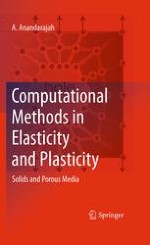2010 | OriginalPaper | Buchkapitel
13. The Drucker–Prager Model and Its Integration
verfasst von : A. Anandarajah
Erschienen in: Computational Methods in Elasticity and Plasticity
Verlag: Springer New York
Aktivieren Sie unsere intelligente Suche, um passende Fachinhalte oder Patente zu finden.
Wählen Sie Textabschnitte aus um mit Künstlicher Intelligenz passenden Patente zu finden. powered by
Markieren Sie Textabschnitte, um KI-gestützt weitere passende Inhalte zu finden. powered by
